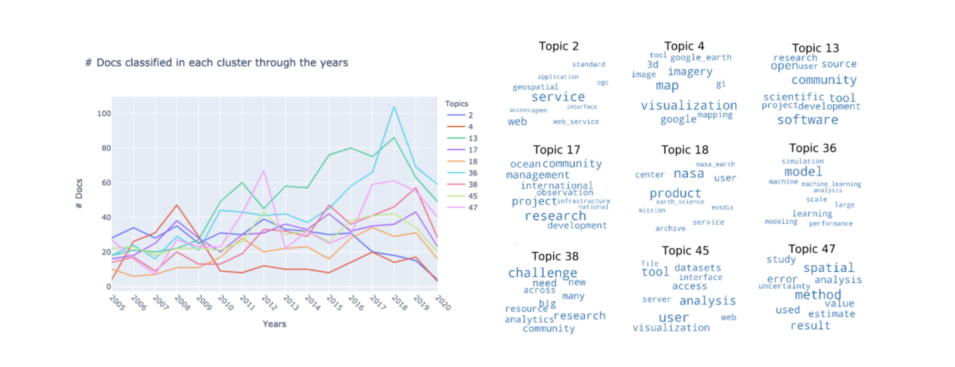Each year NASA’s Interagency Implementation and Advanced Concepts Team (IMPACT) benefits from the expertise and energy of summer interns. This summer’s group of interns – Bethany Kuo, Anisha Kabir, and Tony Park – are an excellent example of the contributions interns make to project teams over the course of 10 weeks and the valuable career-related skills they gain from working closely with experienced mentors and scientists in the fields of Earth science and computer science.
IMPACT is a component of NASA’s Earth Science Data Systems (ESDS) Program and works to expand the use of NASA Earth observing data through innovation, partnerships, and technology. This summer’s interns applied their knowledge and insight to projects in IMPACT’s machine learning group. One of this group’s focus areas is research into how to apply natural language processing (NLP) and knowledge graph technologies to improve the discovery of knowledge within Earth sciences. These three interns fit naturally into this effort.
Bethany Kuo is a computer science and linguistics double major at the University of Maryland. In collaboration with IMPACT team members, she explored the effectiveness of combining a knowledge graph with bidirectional encoder representations from transformers (BERT) sentence embeddings and graph convolutions to surface related information to provide answers to natural language queries.



